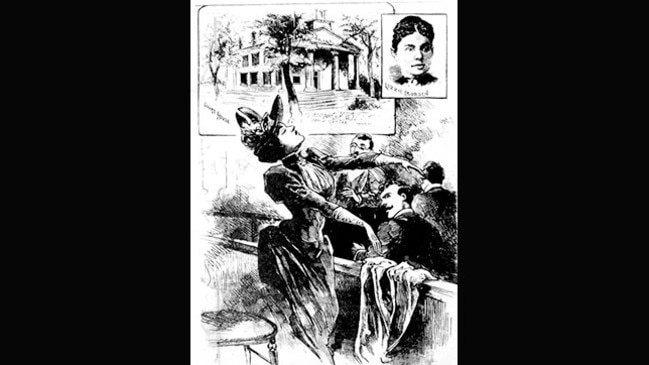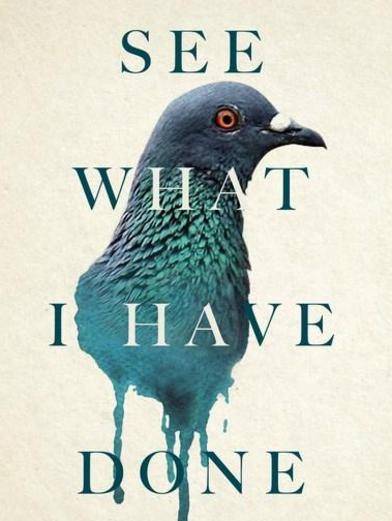See What I Have Done: Sarah Schmidt’s take on some murderous minds
More than a century after allegedly killing two people with an axe Lizzie Bordern has remained a source of fascination.

On the morning of August 4, 1892, Bridget Sullivan, maid to the wealthy Borden family of Fall River, Massachusetts, was summoned by Lizzie, at 22 the younger of the two Borden daughters. “Come quick! Father’s dead,” she cried. “Somebody came in and killed him.”
On reaching the sitting room she discovered Lizzie’s father, Andrew Borden, slumped on a sofa, his head shattered by close to a dozen blows to his face with a hatchet, one of which had split his eyeball. He was still bleeding.
The police were summoned, but not long after they arrived Bridget and a neighbour went upstairs and found the body of Lizzie’s stepmother, Abby, on the floor of the guest room. She had been hacked to death in the same fashion as her husband.
In the days following, suspicion fell on Lizzie, who gave inconsistent and contradictory accounts of her movements on the morning of the killings. On August 11 she was arrested.

Whether due to the gruesomeness of the killings, the status of the family, the fact Lizzie was a woman or some combination of all three, the case became a sensation. It went even wilder when, in 1893, Lizzie was acquitted of the killings and set free. She died in 1927.
In the century and a bit since, the case has remained a source of constant fascination and speculation, spawning a small library of nonfiction books and novels. Some point to other suspects, perhaps most notably Bridget and Lizzie’s uncle John Morse, who was staying in Fall River at the time of the killings. Others seek to understand the curiously overheated atmosphere of the Borden household.
Sarah Schmidt’s debut novel See What I Have Done inserts itself into this crowded field with considerable intelligence and poise.
Told from the perspectives of Lizzie, her older sister Emma, Bridget and the shadowy Benjamin, a violent drifter whose life intersects with the Bordens, it is less interested in establishing whodunit or anatomising the motivations of the perpetrator than in capturing the textures of the murderous mind.
It’s a project undertaken before — Patrick McCabe’s brilliant The Butcher Boy or MJ Hyland’s This Is How (the title of which See What I Have Done seems to echo, consciously or otherwise) are good examples — yet there is nothing second-hand about Schmidt’s novel. For while her control of narrative tension occasionally wavers, especially in the final third, for the most part this novel has the sort of assurance rarely found in debut fiction.
It’s quality underpinned by the fact Schmidt writes thrillingly well, and despite the occasional slightly disconcerting anachronism (did 19th-century people really say “lighten up”?) has an eye for striking images: Andrew Borden’s body laid out like “a bone xylophone”; a man vomits “gravy-thick” on to Benjamin’s boots. Yet the real strength of her prose lies in how it captures the shimmering motion of Lizzie’s mind, and the minds of others. We shift between her agitated, slightly deranged childishness, Emma and Bridget’s thwarted desire for freedom from their circumstances and the cruel violence of Benjamin’s psyche.
Of the four, the real triumphs are Benjamin and Lizzie. Despite his initially tangential relationship to the central narrative (a problem the novel never fully resolves) Schmidt inhabits the mind of the feral Benjamin entirely convincingly, capturing not just his unsettling lack of affect and impulsive violence but also his anger and sense of grievance. Similarly, her portrait of Lizzie is simultaneously deeply persuasive and genuinely disturbing. Needy, preening, infantilised by her controlling father and childlike in her vengefulness and sense of entitlement, Schmidt’s Lizzie is repulsive and pathetic yet always entirely believable.
The novel’s real achievement is how it infects the proceedings with constant unease, suggesting there are things Lizzie and Emma are not telling us. The textures of the house and the daughters’ lives carry an unsettlingly sexualised charge, as does Lizzie’s relationship with her father and, to a lesser extent, her stepmother. This sense of the unspoken and unknowing is part of what elevates Schmidt’s treatment of the material above so many similar novels. For threaded through an account of the familiar story is something only rarely encountered: a portrait of a murderer that does not pretend the act of murder is explicable but instead captures the layers of denial and self-deception that surround it with chilling and frightening precision.
Sarah Schmidt will be a guest at the Sydney Writers Festival, May 22 to 28.
James Bradley’s new novel is The Silent Invasion.
See What I Have Done
By Sarah Schmidt
Hachette, 328pp, $32.99


